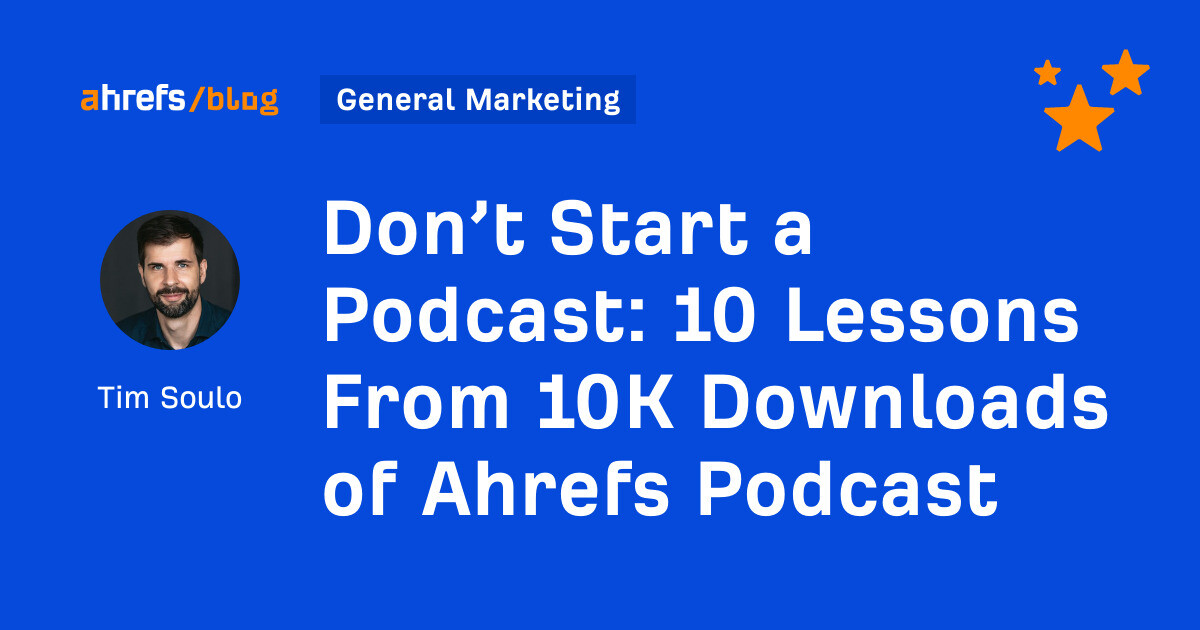[ad_1]
Web site site visitors information usually appears to be like like this:
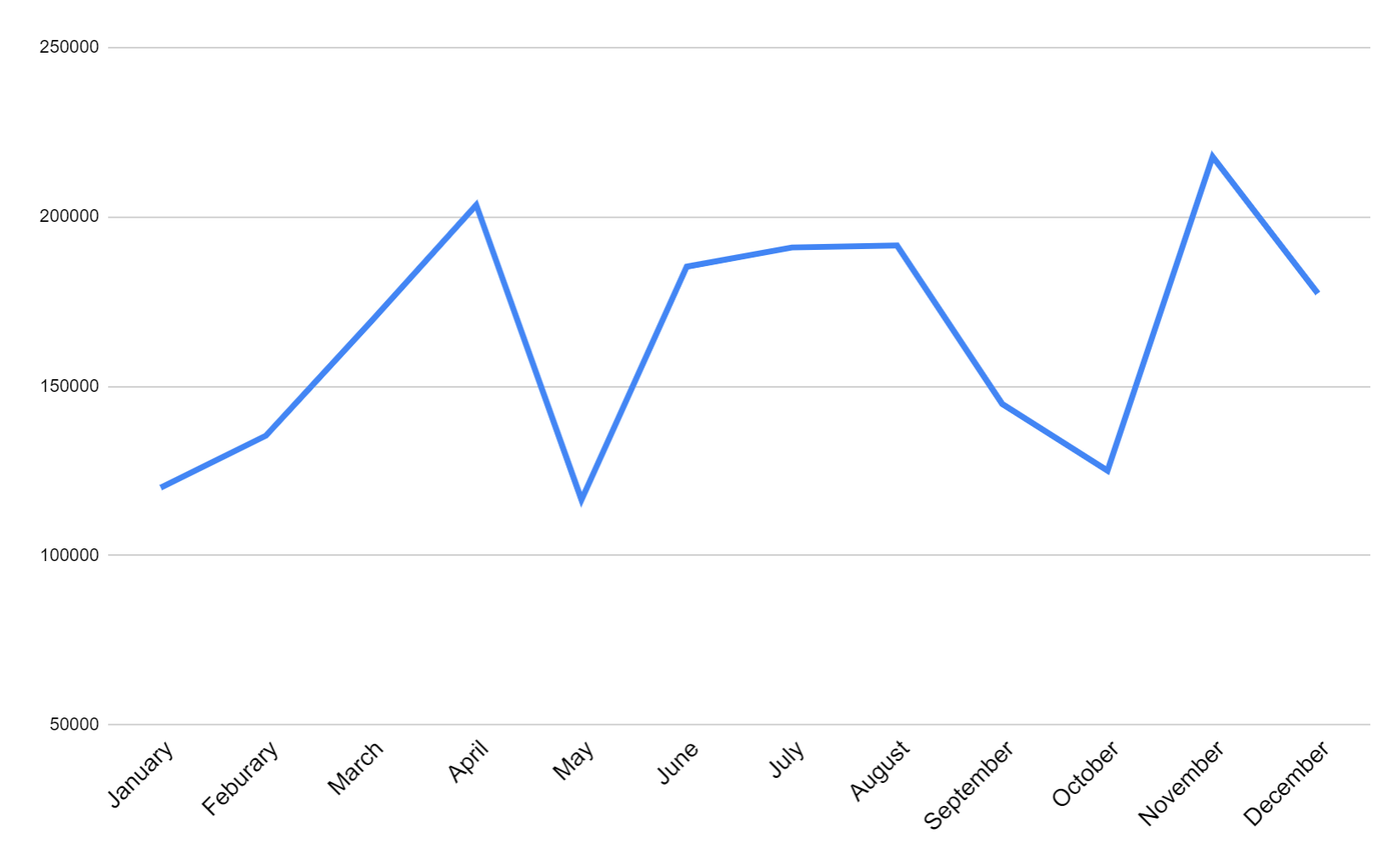
Ups and downs, peaks and troughs.
If we’re doing our job correctly, we typically anticipate site visitors to pattern upwards over time, however in any given month, it’s troublesome to say whether or not a peak or a trough is value listening to.
Did we do one thing nice and set off a brand new part of progress? Did we profit from a brand new Google replace? Or is it simply regular variation, a part of the pure ebb and movement of individuals discovering our web site?
Or suppose you make a change to your content material course of—you pruned and redirected a bunch of previous content material—after which site visitors dropped the following month. Was that drop precipitated by the change, or was it only a coincidence?
I’ve been experimenting with a easy statistical device designed to assist reply these questions: XmR charts, often known as course of management charts.
Right here’s an XmR chart:


XmR charts are designed to let you know whether or not any single information level from a time collection is prone to be attributable to regular fluctuation (“routine variation”) or an indication that one thing occurred and must be investigated (“distinctive variation”).
XmR charts include an X plot (named after the x-value, the “factor” we care about—like widgets produced or gross sales closed)…
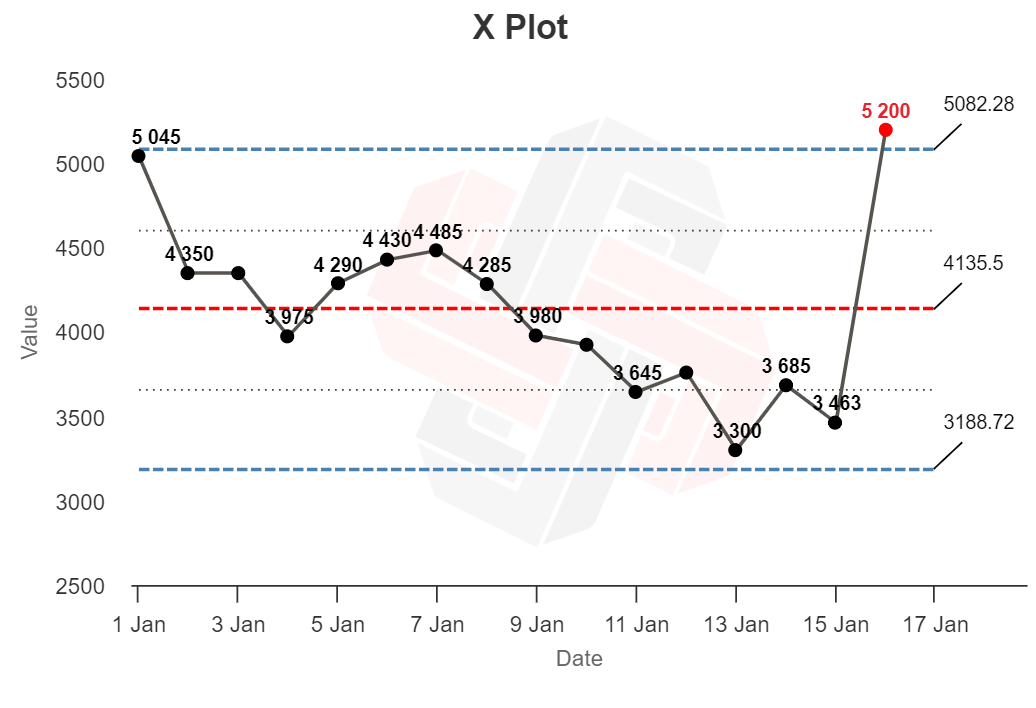

…and an MR plot (named after the shifting vary, principally the “hole” between every information level):
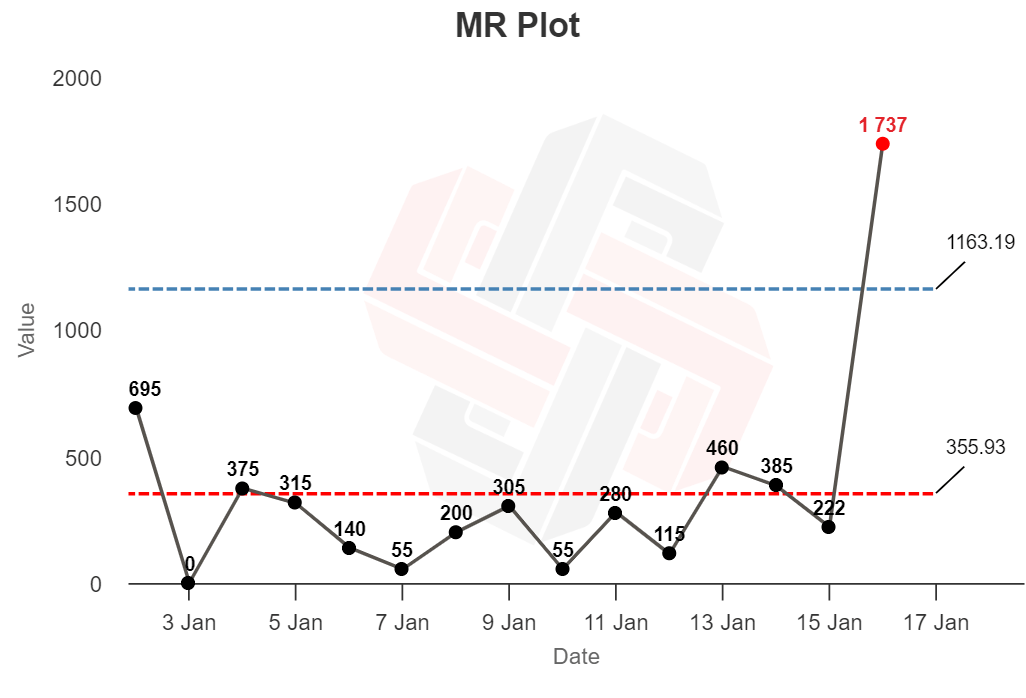

In its easiest use, in the event you plot your information on the chart and it wiggles up and down across the central line, with out crossing the higher and decrease bounds—no drawback! These ups and downs seemingly characterize regular variation.
However any factors that seem outdoors the higher or decrease bounds (proven in purple) needs to be handled as anomalies that must be investigated.
Within the X plot above, the time collection appears to indicate routine variation till January sixteenth, when the primary purple out-of-bounds level seems.
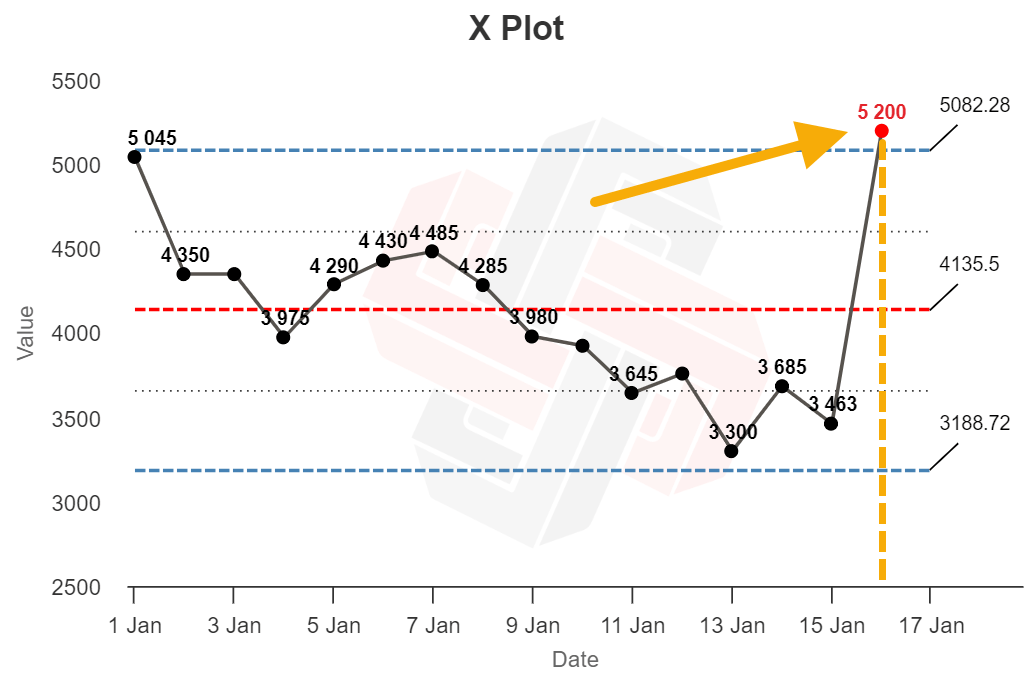

The XmR chart means that one thing occurred on the sixteenth to mess with our manufacturing course of (for higher or for worse). Our job is to analyze why.
Sidenote.
The road within the center is the typical worth of the dataset; the higher and decrease bounds characterize 3-standard deviations away from the typical (generally known as three-sigma). Any level that falls outdoors of those higher and decrease bounds may be very prone to be an anomaly, and never a part of the unique chance distribution.
There are different “indicators” that the XmR chart can present you (like eight consecutive factors on one aspect of the typical line representing one other kind of outstanding variation)—however I’ll depart you to analyze these by yourself time.
Once I began studying about XmR charts, one apparent use got here to thoughts: figuring out the affect of Google algorithm updates.
If a website’s site visitors tanks to zero, it’s straightforward to say “we had been hit by a guide penalty.” However for smaller modifications, like just a few months’ consecutive site visitors decline, it’s tougher to work out the trigger. Did we get caught out by a Google replace? Is it seasonality? Or is it only a coincidence, with site visitors prone to return to regular sooner or later?
Right here’s two years of month-to-month natural site visitors information for the Ahrefs weblog, pulled from Web site Explorer and plotted on an XmR chart:
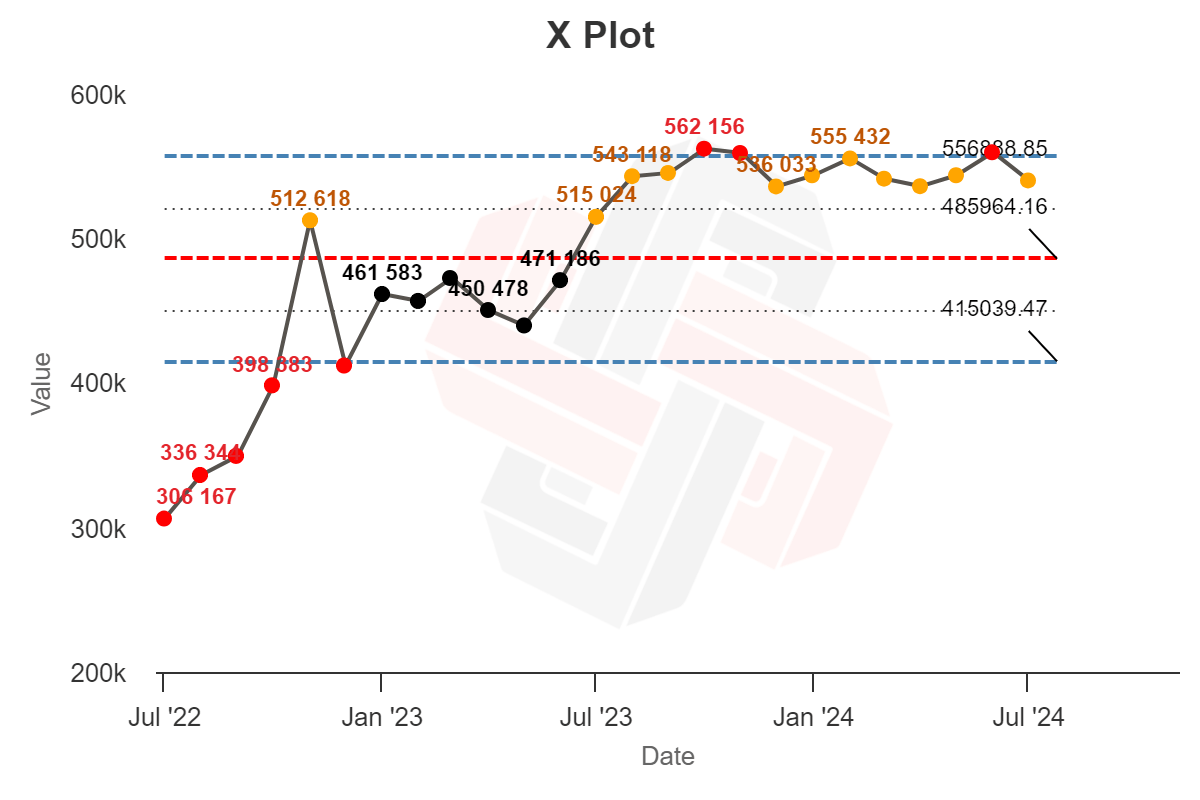

Now… this isn’t notably helpful.
There are tons of knowledge factors outdoors the anticipated vary (purple), with only a few sitting nearer the middle line than the quartile limits (orange).
The XmR chart is meant to indicate distinctive variation in a constant course of—however on this picture, nearly all the information factors recommend distinctive variation. What offers?
Course of charts had been designed round easy manufacturing processes, they usually work very nicely when the anticipated output of a course of is fixed.
In case your purpose is manufacturing 10,000 widgets every week, an XmR chart will assist you to work out if that 5,600-widget month was a traditional “blip” in routine operation, or attributable to an actual drawback that must be investigated.
Web site site visitors is extra difficult. There are tons of variables that affect site visitors:
- the fluctuating search quantity of every matter,
- particular person rating positions,
- new competing articles,
- search options,
- seasonality,
- publishing frequency,
- Google algorithm updates…
That implies that working an XmR evaluation on an extended collection of site visitors information in all probability received’t be very useful. Your “running a blog course of” just isn’t prone to stay secure for very lengthy.
In my case, this explicit two-year snapshot of knowledge in all probability doesn’t come from a single, secure course of—there could also be a number of chance distributions hidden in there.
However we will make the evaluation extra helpful.
The very best follow for XmR charts is to restrict the evaluation to a time period when you already know the method was comparatively static, and recalculate it once you suspect one thing has modified.
Wanting on the Transferring Vary chart for this information under, massive quantities of site visitors variance occurred in November and December. We must always examine attainable causes. 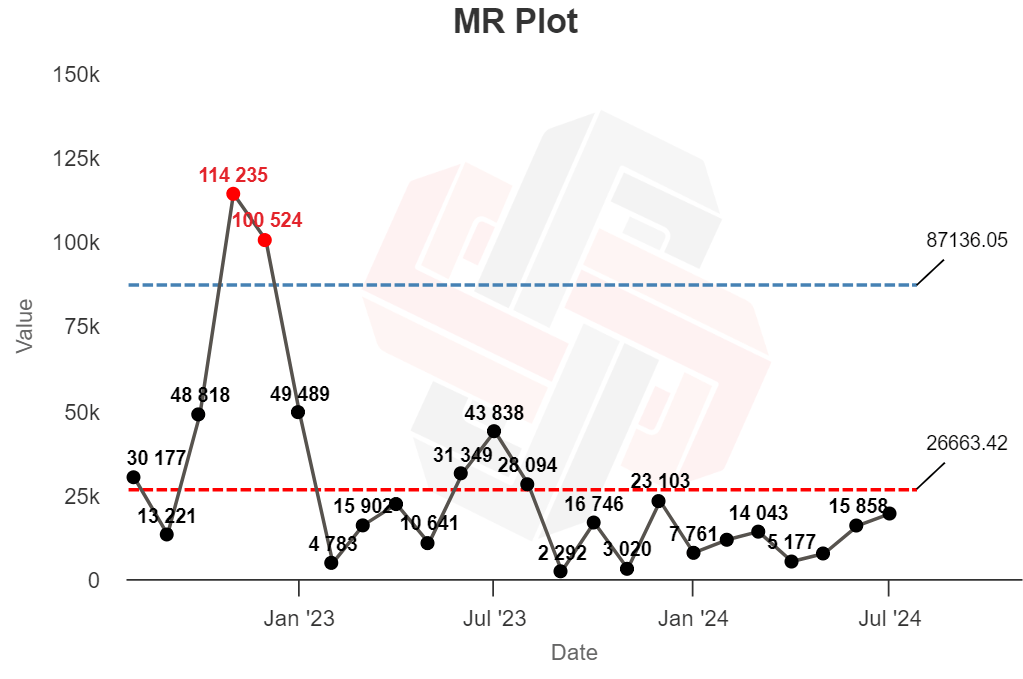

I do know that our publishing frequency was pretty static (we positively didn’t double our content material output). Seasonality would trigger a site visitors drop, not a spike (we’re writing about web optimization, not vacation reward guides).
However there was an enormous Google replace at the beginning of December:
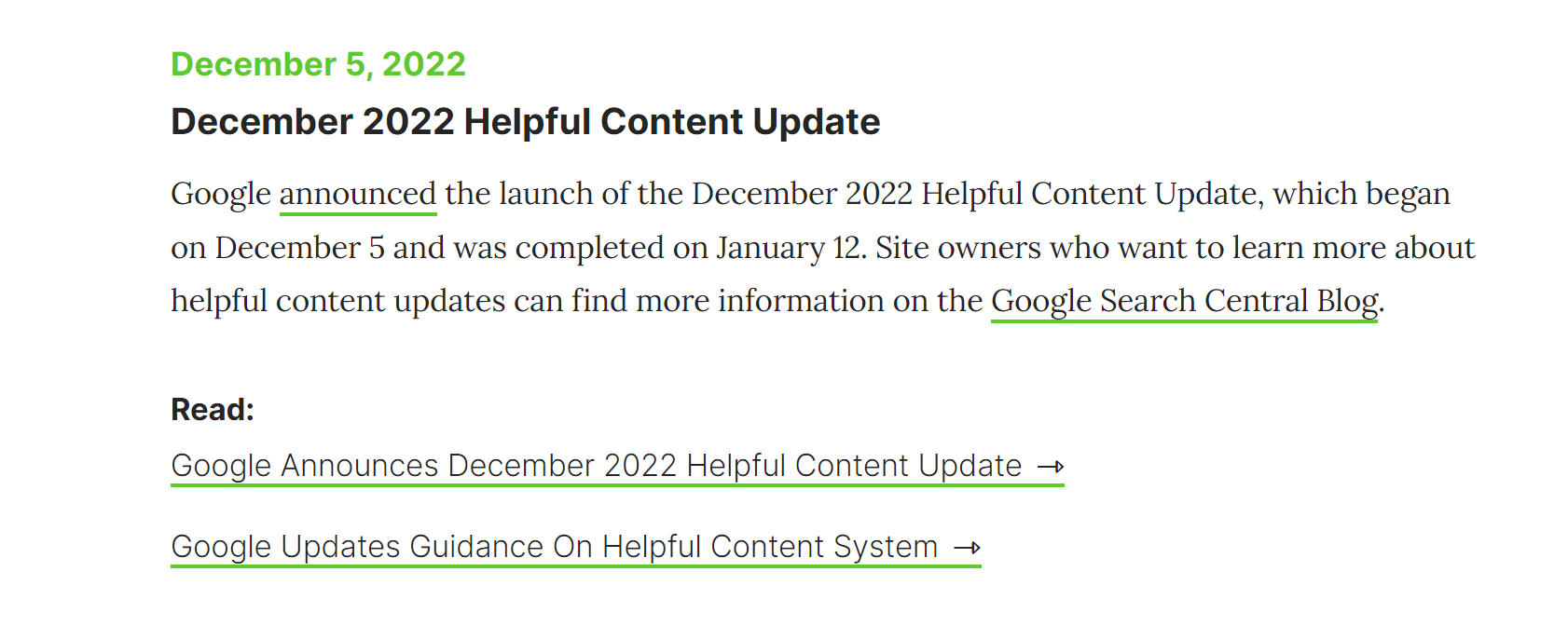

If we work on the belief that one thing occurred to our weblog course of round this time—seemingly a change to site visitors attributable to the Google replace—we will add a divider to our XmR chart.
As a substitute of making an attempt to investigate our site visitors as a single course of, we will deal with it as two processes, and calculate XmR charts individually:


Now the primary course of appears to be like secure (all black dots). The second course of reveals much less excessive variation (purple) too, however there’s nonetheless an excessive amount of reasonable variation (orange) to look secure. There could also be one other course of lurking inside.
And per a rule of thumb for analyzing XmR charts: “the period of an XmR chart must be revisited when a ‘long-run’ of knowledge stays above or under the Common line.” This pattern begins in late summer time (which can be across the time that Google introduced one other core replace):
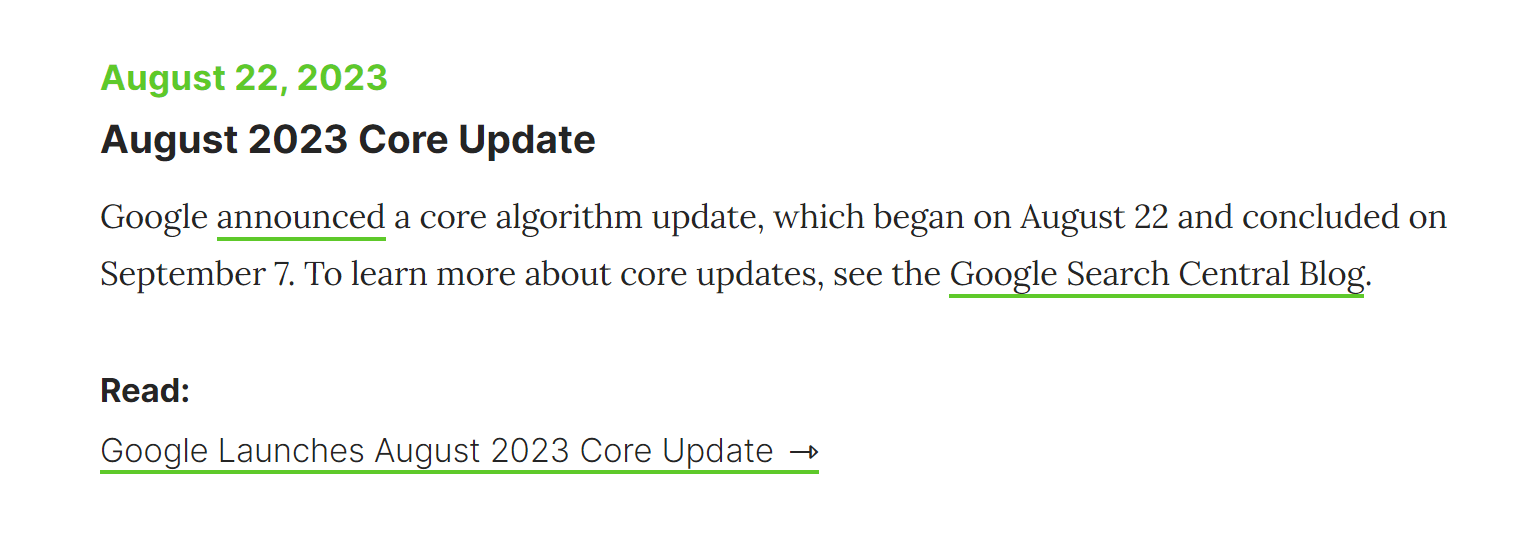

We will add one other divider at the beginning of this “long-run” of knowledge to create three separate XmR analyses:


In doing so, all three analyses appear secure, with no factors of utmost variance. In different phrases, we appear to have completed job at capturing three distinct processes occurring inside our site visitors information.
From this evaluation, there appears to be probability that our site visitors was impacted by exterior components across the time of two main Google updates.
Now… that is principally a post-hoc information torturing train. We will’t infer any causation from this evaluation, and it’s totally attainable that different arbitrary divisions would yield related outcomes.
However that’s okay. These charts can’t offer you definitive, concrete causes why your site visitors modified, however they will let you know the place to look, and assist you to work out whether or not troubleshooting a site visitors dip or spike is an effective use of your time.
The final word measure of a mannequin’s usefulness is its potential that can assist you predict issues. Will XmR charts assist me do a greater job working the Ahrefs weblog sooner or later?
I feel sure.
Assuming my “weblog course of” stays comparatively secure—I publish on the similar frequency, goal the identical subjects, compete with the identical rivals—I now have a set of “secure” information that I can use to supply additional context for future site visitors numbers:


Within the months that comply with, I can work out whether or not dips or spikes in our site visitors are seemingly the results of regular variance, or whether or not one thing has modified that requires my consideration—like a Google replace.
If, for instance, my site visitors does this subsequent month… 

…I do know that—given this distribution—that site visitors drop might nicely be regular, unexciting variance.
But when it does this…


…there’s in all probability one thing else at work.
With excessive site visitors modifications you possibly can often “eyeball” site visitors charts and guess what occurred. However XmR charts are helpful for extra refined variations, and there’s an opportunity I will establish and act on only a single month’s value of knowledge. That’s fairly cool.
Last ideas
Troubleshooting site visitors modifications is an enormous problem for SEOs and content material entrepreneurs (and we’re engaged on just a few methods that can assist you establish the sign amongst the noise of your site visitors information).
Within the meantime, I’ve discovered XmR charts an attention-grabbing device in my toolkit, helpful for contextualizing my month-to-month reporting numbers and justifying after I ought to (or shouldn’t) spend my vitality troubleshooting a down month.
(On the very least, XmR charts may simply provide the confidence essential to say “get off my again” when that VP sends you a brusque 3AM electronic mail complaining about final month’s 8% site visitors dip.)
Sidenote.
Due to Benyamin Elias, VP of Advertising and marketing at Podia, for introducing me to XmR charts.
[ad_2]


